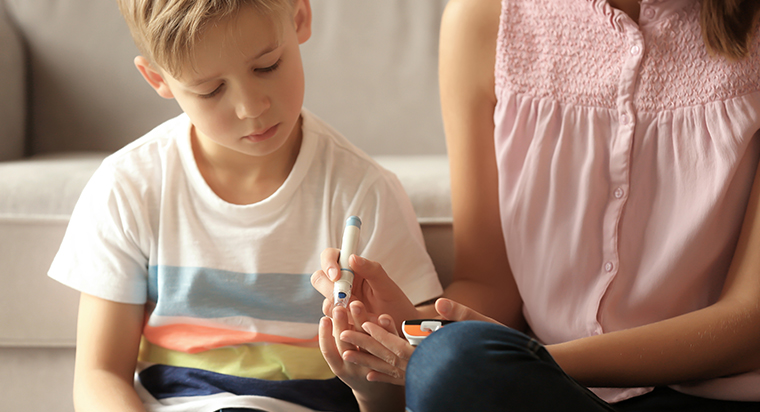Recognizing Diabetes: What Parents Should Know

Find Your Perfect Match
Answer a few questions and we'll provide you with a list of primary care providers that best fit your needs.
The National Institutes of Health says that of the roughly 30 million people in the United States with diabetes, more than 210,000 are younger than 20. And the rate of newly diagnosed cases of diabetes is increasing among the young. Particularly troubling is the growing rate of new cases of type 2 diabetes, which is associated with overweight and lack of exercise, and which used to be extremely rare in the young.
Here’s what to know about diabetes to help reduce your and your children’s risk of the disease.
What Is Diabetes?
Diabetes is a disease in which the level of your blood sugar (glucose) is too high. If high blood sugar is left untreated, serious, life-threatening problems can arise.
Glucose comes from the carbohydrates we eat, such as dairy, grains, starchy vegetables, and other sources. Our bodies use this sugar to provide energy to our cells, tissues, and organs. Extra sugar is stored in our liver and muscles for later use.
The sugar in our bloodstream is regulated, and delivered to our cells, with the help of insulin, a hormone secreted by the pancreas.
There are two kinds of diabetes:
- In type 1 diabetes, the pancreas is unable to make insulin, so too much glucose remains in the bloodstream. Diet and lifestyle don’t play a part in the development of type 1 diabetes, and while the disease can be managed, there is currently no cure. Type 1 diabetes used to be called juvenile diabetes, because it was the type of diabetes most common in children and teens.
- In type 2 diabetes, the pancreas still produces insulin, but the body doesn’t respond to it normally, and glucose levels go up. Type 2 diabetes is now becoming more common in children and teens due to increased obesity among the young, which is a risk factor for the disease.
What Are the Symptoms Of Diabetes In Children?
Type 1
Though type 1 diabetes can appear at any age, it occurs most often in children and young adults. While it’s easy to diagnose in a clinical setting through a simple blood test, it can be difficult for unsuspecting parents to recognize the signs of diabetes in a child who has appeared to be relatively healthy up to this point. The most common symptoms of type 1 diabetes include:
- Frequent need to urinate. The body attempts to flush excess glucose out of the system through the kidneys, creating the need to urinate more often.
- Increased thirst. Urinating more frequently means that the body is losing more fluid than normal, which creates thirst.
- Increased hunger
- Extreme fatigue. This is due to the body’s inability to derive adequate energy from glucose.
- Weight loss (or failure to gain weight as a child grows). The body breaks down muscle and stored fat, trying to supply energy to the glucose-deprived cells.
- Fruity smelling breath
- Blurred vision
Type 2
The symptoms of type 2 diabetes can be similar to those of type 1, but without the weight loss and with the addition of pain, tingling, or numbness in the hands and/or feet.
Recognizing the early signs of diabetes can help you get treatment for your child sooner, reducing the risk of severe complications. If you notice any of these symptoms in your children, speak to your health care provider immediately. Note that the onset of symptoms with type 2 diabetes can be gradual, and sometimes the symptoms can be so mild that they can go unnoticed in the early stages.
How Is Diabetes Treated?
Children with type 1 diabetes will likely need to take insulin. It’s also important to make sure they are eating healthy meals and staying active. Type 2 diabetes can often be controlled with a combination of diet and exercise, otherwise a child with diabetes will need to take oral diabetes medicines or insulin.
Children who are overweight or obese have a higher risk of type 2 diabetes. Other risk factors include lack of activity and exercise or a family history of type 2 diabetes. Children who are African American, Hispanic, Native American/Alaska Native, Asian American, or Pacific Islander also are at greater risk.
To lower the risk of type 2 diabetes in your children:
- Make sure they are physically active.
- Encourage and help them to maintain a healthy weight.
- Offer them smaller portions of healthy foods.
- Limit their time with the television, computer, and other such devices.
Find Your Perfect Match
Answer a few questions and we'll provide you with a list of primary care providers that best fit your needs.
Source: Juvenile Diabetes Research Foundation; Medical News Today; Medline Plus (National Institutes of Health); American Diabetes Association; Centers for Disease Control and Prevention




